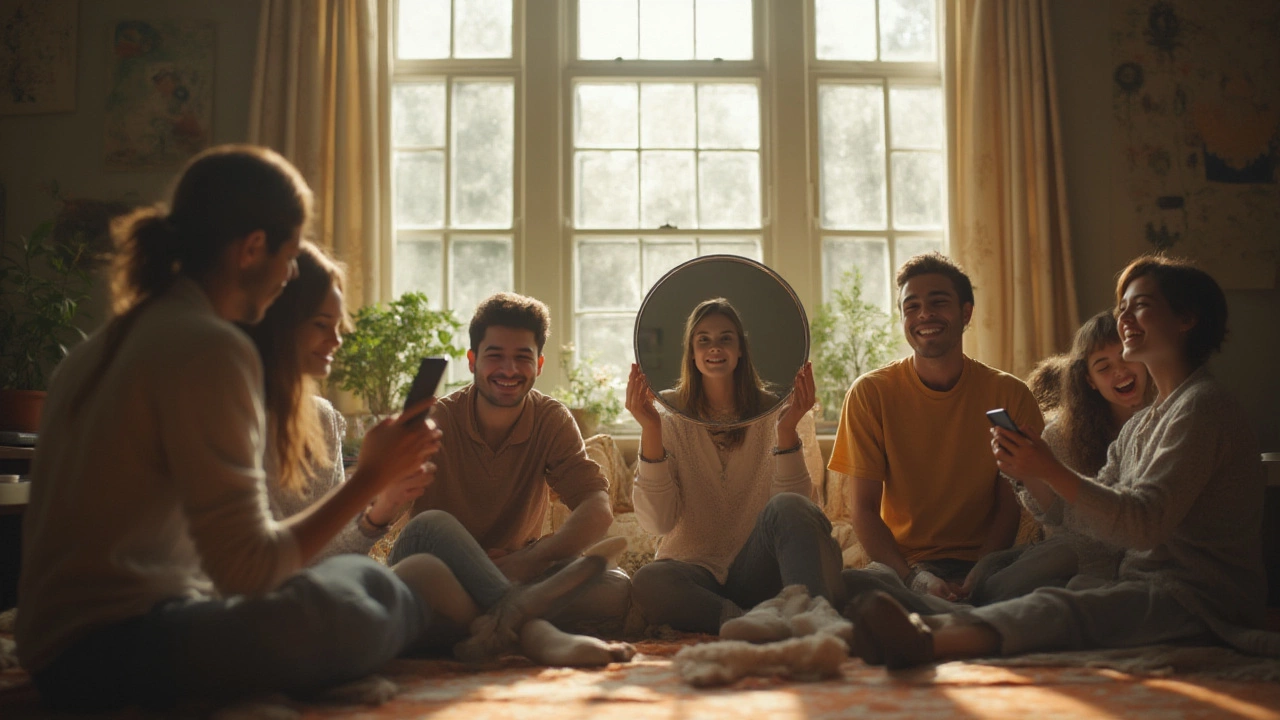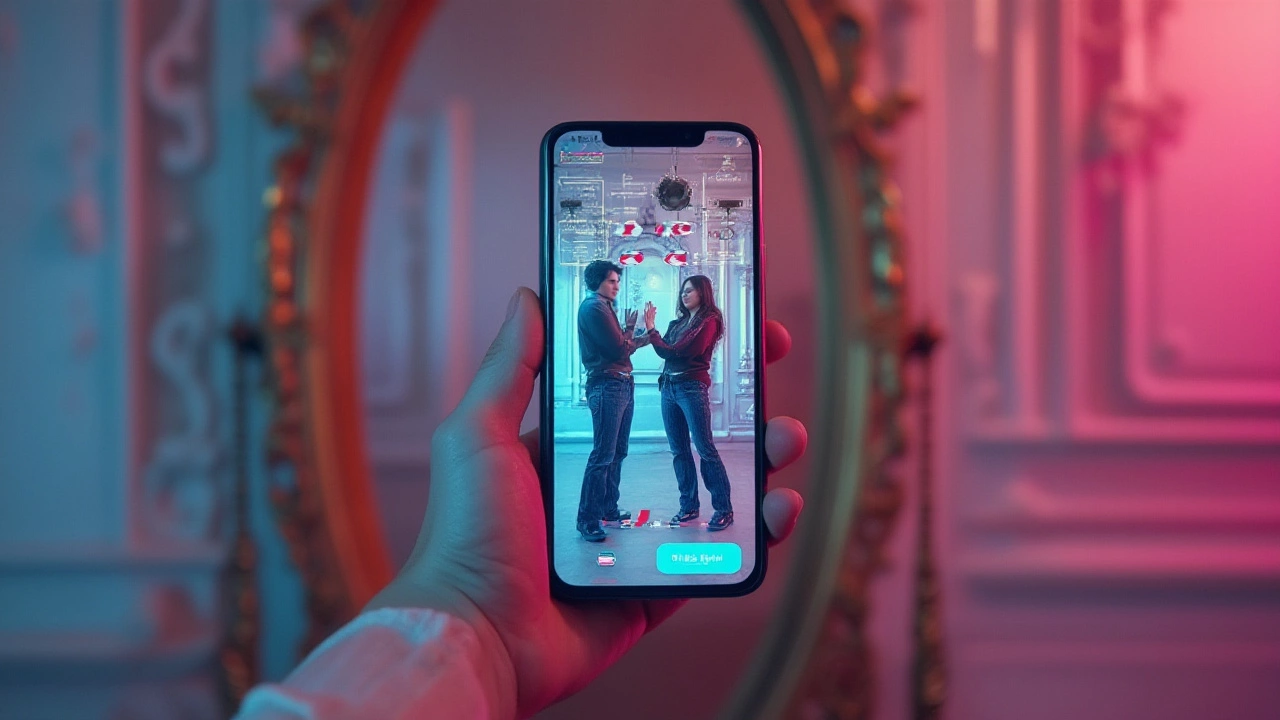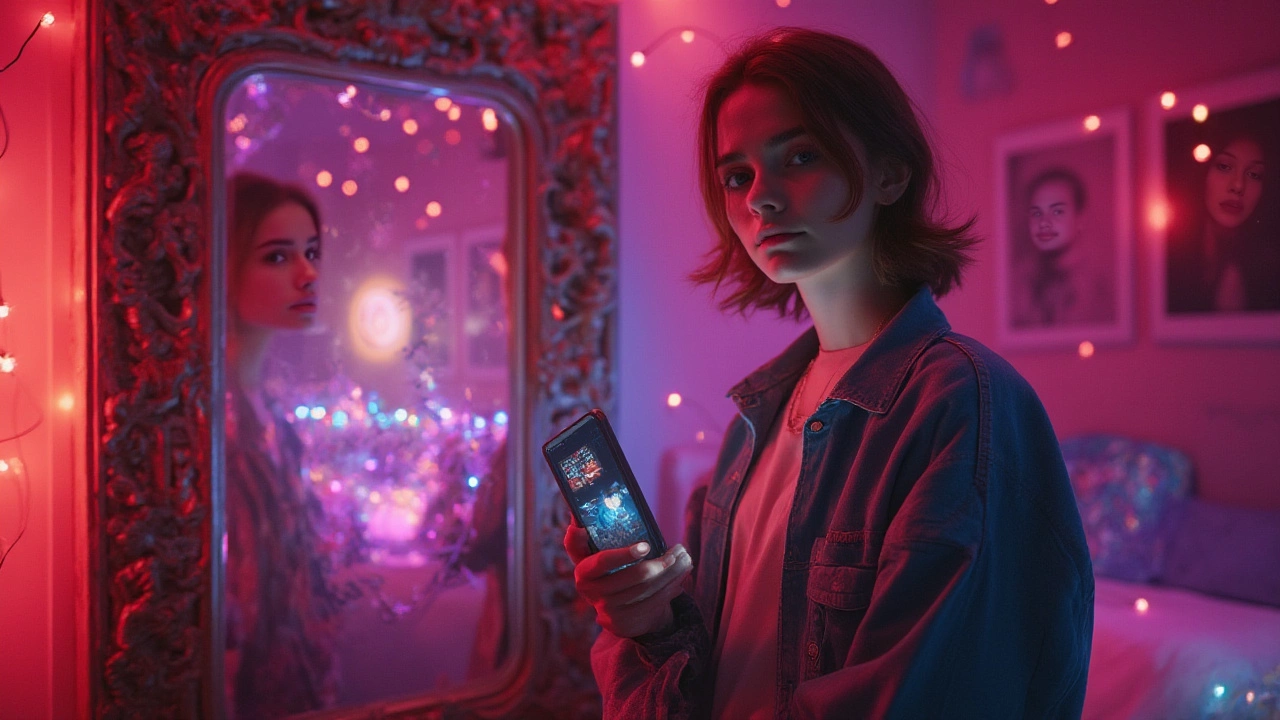Isn’t it wild that one little mirror can totally change the vibe of a TikTok video? People love those crazy reflection effects, and the #MirrorChallenge tag has racked up billions of views. But what’s really going on behind the glass? Is it all camera tricks, or is there a secret science that makes your double—or sometimes even your triple—appear on screen? Let’s spill the tea on why everyone from Gen Alpha teens to bored moms is obsessed with mirrors lately and what’s happening behind all the smoke and shiny panels.
Breaking Down How TikTok Mirror Effects Actually Work
The hype seems endless, but the basics are surprisingly simple. Most TikTok mirror effects lean on two kinds of tricks: actual physical mirrors and digital mirror filters built into the app. If you’ve ever held up a makeup compact to your phone and lined up the shot just right, you already know how physical mirrors create an instant copycat effect. It’s classic: the chemistry between light, angles, and surfaces gives that mind-bending result. TikTok’s own in-app effects do something similar, but with algorithms instead of glass—using your camera feed, the app splits, doubles, or reverses your image in real-time. Bonus? No need to risk dropping Grandma’s heirloom mirror.
People started using mirrors way before TikTok. Even back in the 17th century, artists used them to figure out symmetry or dramatize self-portraits. Physics is the real MVP here: mirrors flip images, bounce light at perfect angles, and can even distort reality, depending on the shape of the glass. That’s why a classic flat bathroom mirror gives a simple reflection, but a funky flexible mirror (think: those ones at a carnival) makes your head huge or your legs super skinny. On TikTok though, most creators keep it old-school with standard flat mirrors, handheld compacts, or bargain finds from dollar stores to get classic reflective effects.
TikTok later jumped in and made things tabletop simple. The filters tucked in your “Effects” tab pull off mirror illusions using the same coding tricks that Snapchat and Instagram filters use. These digital mirrors “clone” and copy your face, slice it down the middle, and then flip the halves together, or sometimes generate a full 360-degree hallucination. The game-changer? With just a swipe, your video can look like a high-budget music video or an art school project, all in 15 seconds flat. Plus, these effects are usually designed to work with both your phone’s front and back cameras—letting you document everything from killer eyeshadow hacks to dance routines where it looks like you’re high-fiving yourself.
Here’s why this matters: symmetry fascinates the human brain. According to a 2023 study from Stanford, people are 53% more likely to click or watch content featuring mirrored images or symmetrical visuals. The theory is, our brains crave order—mirrored content feels unexpectedly satisfying. This is why sculpted makeup tutorials where artists use the mirror for perfect lines, or choreographed dances with synchronized moves and reflections, get way more engagement than you might expect. Even simple tricks like holding up a phone to a mirror and rapping or lip-syncing to your favorite song feel more magical.
If you want to dig into the science a little deeper, here’s a handy table that sorts out the main types of TikTok mirror effects and how they work:
| Type of Effect | How It Works | Typical Uses | Extra Gear Needed? |
|---|---|---|---|
| Physical Mirror | Light bounces off mirror surface, creating a real reflection | Makeup demos, outfit shows, double-lip-syncs | Hand mirror, compact, or large mirror |
| Digital Mirror (Filter) | App copies/folds video image for split or flipped effect | Viral challenges, dance trends, illusions | Nope, just your phone |
| Combination (Mirror + Filter) | Physical mirror for main effect, filter for added layers or symmetry | Complex illusions, ‘mirror in a mirror’ tricks | Both mirror and phone/app |
This isn’t just a trick for pretty girls or dancers: mirror effects can highlight personality, humor, or even the architecture in your house. That hallway shot? It looks cooler when your selfie grabs a shot of the whole corridor, making it seem huge or maze-like. Sharing a funny family moment? Use a mirror to double a goof—everyone loves a surprise twin. Several TikTokers with millions of followers—like @brittany_broski or @itsjojosiwa—jump on these mirror effects, especially when launching remixes of trending songs or new #POV scenes. When a challenge explodes (think early 2024’s "Mirror Twins"), hundreds of thousands of people copy the formula. That’s more than just hype; it’s collective creativity riding on old science made new by tech.

Tips, Tricks, and Hacks for Mastering TikTok Mirrors
Alright, so you want your video to pop off? Nailing those mirror shots on TikTok is all about small tweaks and creative spins. Here’s where most people slip up: using a grimy bathroom mirror or catching their own phone and arm in every shot. Tidiness counts. Wipe that mirror with a microfiber cloth to dodge blur and fingerprints. Next, watch your lighting. Natural light wins, but a cheap ring light placed just off to the side can take your mirror shot from meh to mesmerizing. Ever noticed pro creators almost never have harsh flash? That’s on purpose; glare kills the illusion and makes everything look wonky—or worse, ghostly pale.
Angles make all the difference. If you want that perfect symmetrical look, keep your camera level with your subject (your face, outfit, whatever). Set your phone on a stack of books, or just balance it against a cup—seriously, it works. If you’re going for something trippy, tilt the mirror to create a vanishing point. Watch how creative skateboarders use moving mirrors to show off flips and tricks in ridiculous slow-mo. For dancers or group challenges, a wall mirror lets you squeeze everyone in—even that one friend who never fits in the frame.
Here are a few steps if you’re trying the trend for the first time:
- Pick your mirror: compact for close-ups, big mirror for outfit/dance vids.
- Set up your light source: sunshine or a soft lamp at a slant is your BFF.
- Clean up your background. Your viewers see everything, even that stray laundry pile.
- Open TikTok, select the “Effects” tab, and search for “Mirror.”
- Toggle through filters. Some flip your face side to side, others create infinite reflections.
- Hit “Record” and check your lines—are you perfectly lined up, or do you need to shift?
- Record a short test clip, review, and tweak as needed.
If you want to double down, combine a real mirror with a digital filter. This can lead to trippy, almost holographic results where your reflection has a mind of its own. Just watch out—sometimes the app gets confused and warps you like a funhouse mirror. Also, try not to overdo it. Subtlety stands out. A little twist—a prop, a quirky move, or a fast costume change—turns a basic reflection into a scroll-stopper. Listen to your audio, too: certain trending songs are designed to sync with a mirror reveal or transformation, and the right beat drop can make all the difference.
If you’re not getting good results, try this hack: use a second phone for smoother camera work or to capture a different angle. Many TikTokers recruit a friend (or even their grandma) to hold a mirror and get a perfect shot. And here’s a secret: don’t be afraid to practice and retake. Most viral moments you see actually took 15…maybe 50…tries to nail.
Don’t forget to lean into community trends. Check TikTok’s “Discover” or “For You” page for active challenges tied to mirrors. Using the right hashtags—#MirrorEffect, #Reflections, and #TwinsOnTikTok—can seriously boost your views. Also, if you’re worried about privacy (seriously, people have accidentally revealed everything from credit cards to bathroom messes in their reflection), take a minute to double-check your shot before posting. A quick pan over the mirror’s corners might just save you from instant internet embarrassment.

Why the Mirror Craze Won’t Fade (and What It Reveals)
So what’s really going on with all the mirror videos? It’s not just about showing off your face or outfit—it’s about illusion, identity, and sometimes even poking fun at yourself. A study from UCLA in late 2024 found that people spend up to 33% longer watching visual illusions or mirrored images than plain videos. A big part of it is curiosity. We like to see what’s “off” or different, and our brains are hardwired to spot symmetry versus chaos. TikTok’s For You algorithm knows this, and doesn’t miss a beat when pushing mirrored content to trending status.
Mirrors also tap into this universal urge to self-reflect (pun intended!). Whether you’re checking your latest makeup look, showing both sides of an argument, or teasing the reveal of a new haircut, mirrors let you remix reality on your own terms. Some creators even use split-mirror effects to talk about personal growth or mental health, playing with the idea of literally “facing yourself.” That’s probably why so many psychologists now say creative selfie-use on social media can be a fun, non-threatening way for people to learn self-acceptance.
It gets deeper, too. Mirrors have long been tied to art, magic, and even mythology. Think about Alice’s trip through the looking glass or the way magicians make assistants “disappear.” These visual stunts are fun, but they also mess with what we know is real. In a weird way, TikTok keeps that same ancient energy alive—anyone, anywhere, can create illusions and experiment with their identity for the world to see. The payoff? That moment when your comment section blows up with “How did you do that??” and you get to wink and say, “Just a little mirror magic.”
Want to know what’s next? In 2025, TikTok is rolling out even more advanced mirror-style effects using augmented reality, letting your reflection interact with digital objects or dance alongside you in real time. It’s not just for influencers or twenty-somethings, either—teachers, artists, therapists, and even architects are using these effects to explain concepts, tell stories, or design spaces. If you’re aiming for viral fame or just want to flex your creative muscles, learning a few good mirror tricks is like having a secret ingredient in your recipe for success.
So, if you’re itching to try something new or just want more views, don’t sleep on the mirror craze. One cheap piece of glass, a steady hand, or a single swipe on your For You page and you might just catch yourself—literally!—becoming the next viral sensation. All it takes is a little practice, some playful angles, and a willingness to laugh at your own reflection. Grab your phone, hunt down a mirror, and start experimenting. The rest? Pure TikTok magic.

